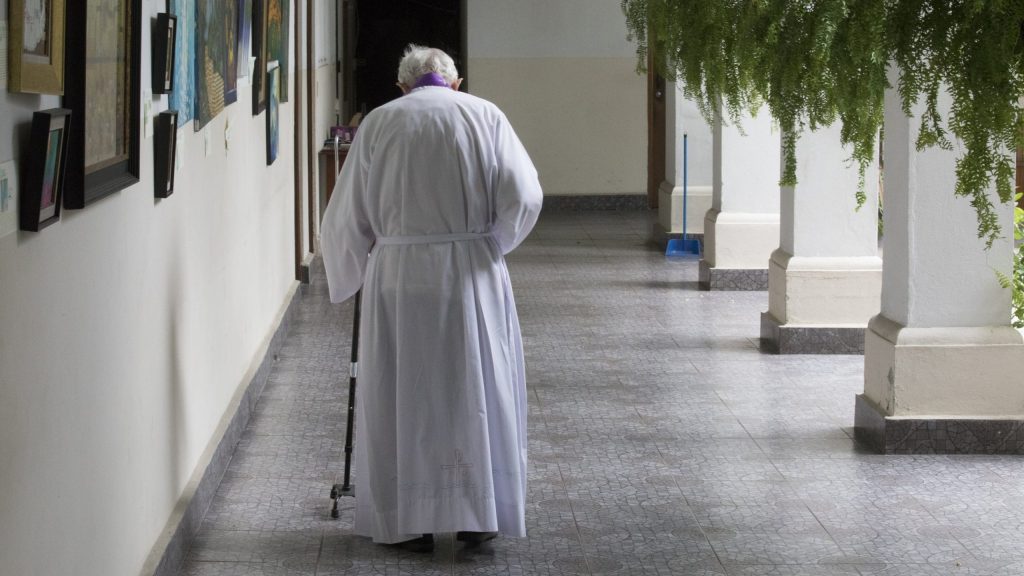Pope Francis told elderly priests from northern Italy that aging is a privilege because they have the chance to suffer like Jesus Christ.
“You are experiencing a season, old age, which is not a disease but a privilege,” he said in a Sept. 16 letter to priests from the Lombardy region.
“And even those of you who are sick live, we can say, a privilege: that of resembling Jesus who suffers, carrying the cross just like Him,” he added.
Pope Francis sent the letter as elderly priests and the bishops of the Lombardy region met for a day of prayer and community at the shrine of Santa Maria del Fonte in Caravaggio, 25 miles east of Milan.
The day began with Mass offered for the repose of the souls of the 92 Lombardy priests who died as a result of the coronavirus pandemic. The Mass was followed by a shared lunch.
“Think of Simeon and Anna: just when they are elderly, the Gospel enters fully into their lives and, taking Jesus in their arms, they announce to everyone the revolution of tenderness,” the pope wrote in his letter.
Francis said that the sick and elderly priests were not merely an object of assistance, but also active protagonists in their communities.
“You are the bearers of dreams, dreams full of memory and therefore very important for the younger generations precisely because your dreams are the root,” he wrote.
“From you comes the sap to flourish in the Christian life and in ministry,” he commented.
The 84-year-old pope, who underwent colon surgery in July, also said that communities caring for sick and elderly priests are “well rooted in Jesus,” and closed his letter by asking for prayers.
“Please, pray for me who is a little old and a little, but not too much, sick!” he said. “May the Lord bless you and Our Lady keep you.”
The Sept. 16 gathering of priests and bishops took place at the Basilica of Santa Maria del Fonte, a shrine dedicated to Our Lady of Caravaggio in the province of Bergamo, one of the areas in Italy worst affected by the first wave of the coronavirus pandemic in 2020.
The Shrine of Our Lady of Caravaggio was built on the site of a 15th-century Marian apparition.
The Blessed Virgin Mary reportedly appeared to a young peasant girl, Giannetta Varoli, in a hay field outside the town of Caravaggio on May 26, 1432.
In her message, the Virgin urged penance for sin, including fasting on Fridays. The apparition is also called Our Lady of the Fountain because a spring of water appeared under the stone where the Virgin stood, and on which she left an imprint of her feet.
That same year, the first small shrine was built at the site. More than 100 years later, in 1575, St. Charles Borromeo, then the archbishop of Milan, hired an architect to begin the long process of expanding the shrine into what it looks like today.
